Charles Bridge – the oldest bridge across the Vltava
Breathtaking views of the historical heart of Prague, 30 Baroque statues, Gothic bridge towers and a wealth of legends: that’s Charles Bridge, the oldest preserved bridge in Prague (founded in 1357) and the second oldest bridge still standing in Czechia (beaten only by the bridge in Písek). Charles Bridge is one of the most beautiful places in Prague, in Europe, in the entire world, in fact. According to reviews on TripAdvisor and a study by the British company Kuoni, Prague’s most famous bridge is even the 6th most beautiful heritage site on the planet!
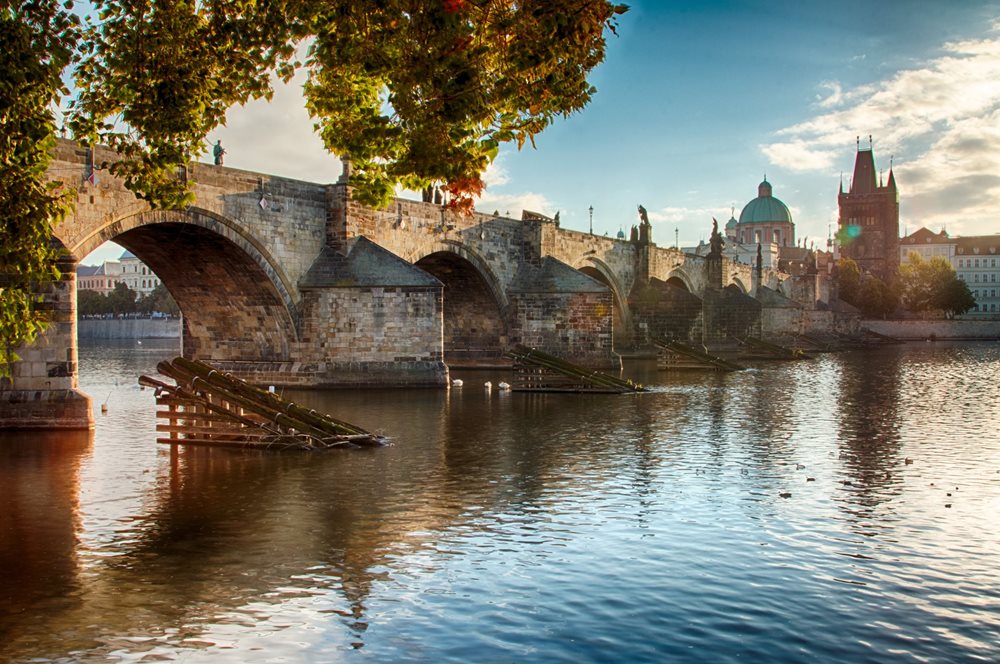
The bridges across Čertovka Canal – Prague’s Little Venice
There are five bridges and one footbridge spanning the charming, man-made Čertovka (Devil's Canal). The canal was built in the 12th century by the Knights Hospitaller, to supply water to the nine mills that originally stood in Malá Strana. The bridges link the little Kampa Island on the Vltava with the other parts of Malá Strana. One even leads right below Charles Bridge. When you walk around here, it’ll be obvious why this romantic district around the Čertovka is known as Prague’s Little Venice.
Mánes Bridge – Czech Cubism above the Vltava
This bridge, named after the Czech painter and the artist behind the charming panels on the calendar dial face of Prague’s Astronomical Clock, is a fine example of Czech Cubism – an architectural style unmatched anywhere else in the world. It is notable for its figurative friezes, featuring themes from the life of the Vltava swimmers. Mánes Bridge was built on the site of a former ferry, which used to carry people across to the local fishing village. From 1914 to 1920 the bridge bore the name of Archduke Franz Ferdinand of Austria.
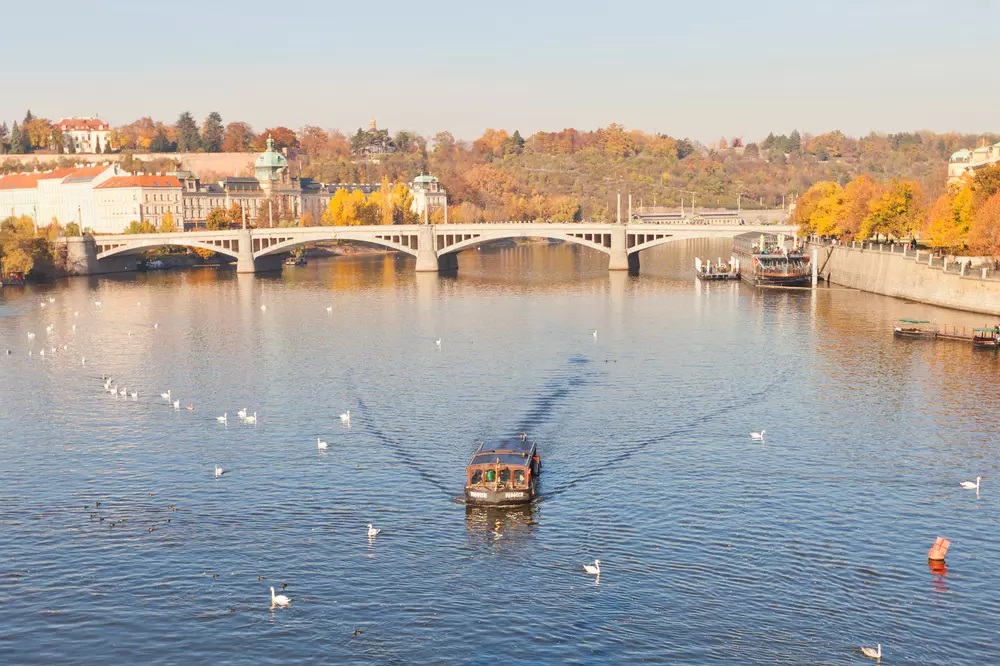
Troja Bridge – a unique feat of European technical engineering
This elegant bridge on the Vltava, one of the biggest bridges in Czechia, boasts one of the flattest arches in the world. In terms of its design, it is the only one of its kind in the world. In fact, in the prestigious European Steel Design Awards 2015, Troja Bridge won the Award of Excellence in the Bridges category.

Čech Bridge – a unique Art Nouveau gem over the river
Prague’s shortest bridge on the Vltava is the only Art Nouveau bridge of this size in Czechia. So it’ll come as no surprise that it’s listed as an Industrial Heritage Site. It boasts some stunning decorative features: its 4 bronze statues of geniuses on glazed iron lanterns atop the columns, bronze statues of torch-bearers, and bronze six-headed hydras with the emblems of Prague will carry you back in time to the Art Nouveau era.
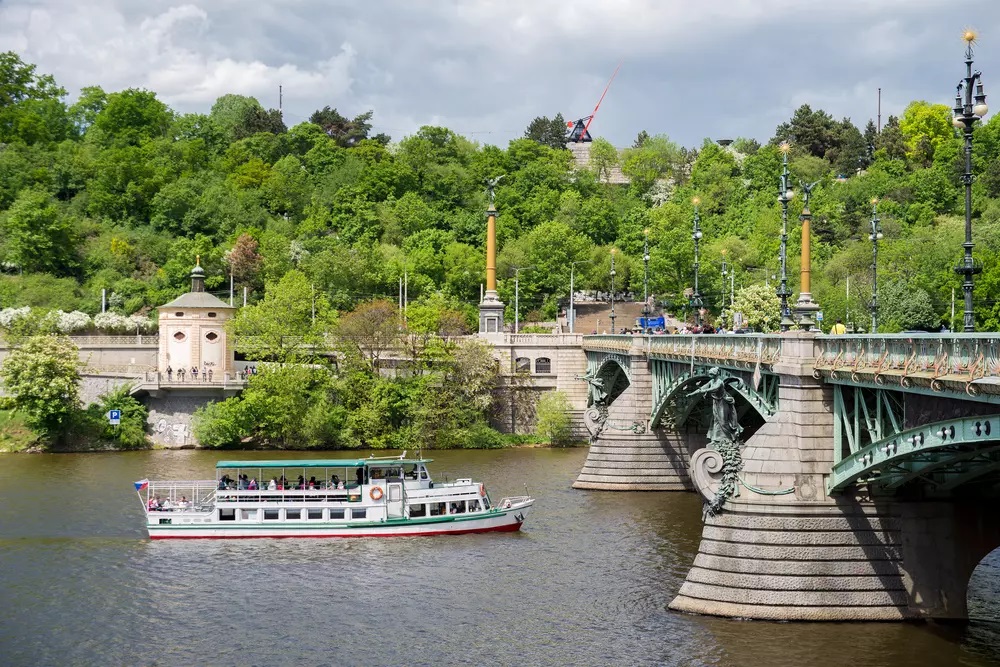
Negrelli Viaduct – the longest rail bridge in Czechia
Not only is the Negrelli Viaduct the second oldest of Prague’s bridges across the Vltava, it’s even the longest rail bridge in Czechia! It was opened in 1850 and until the early 20th century was the longest rail bridge in Europe. The Negrelli Viaduct spans the island of Štvanice, linking the charming Masaryk Station in Prague, which dates back to the mid-19th century, with Holešovice.
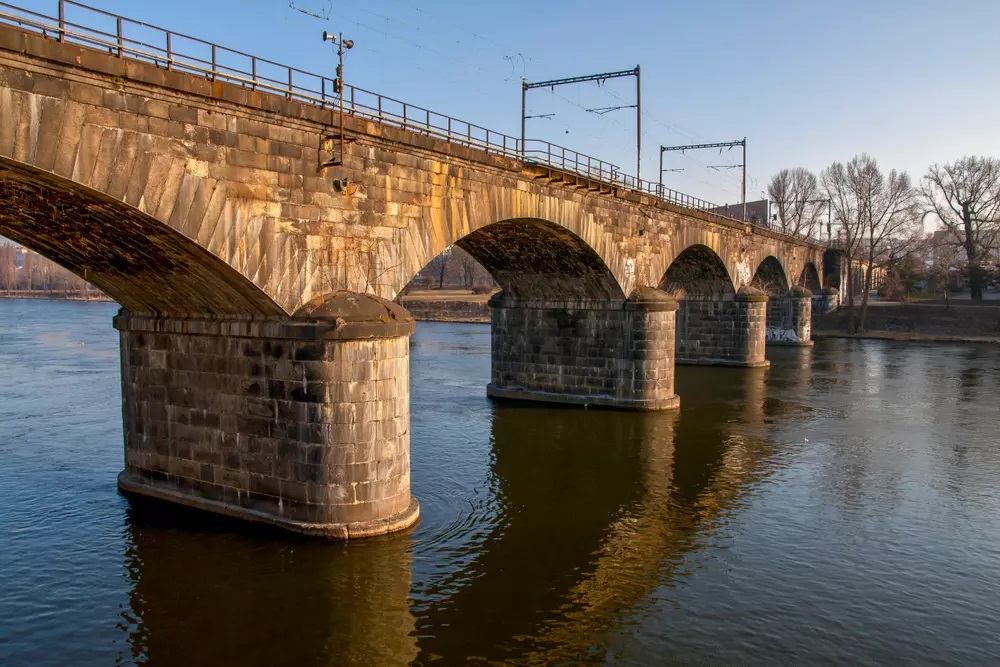
Libeň Bridge in Prague – Prague’s longest bridge on the Vltava
Libeň Bridge, linking Holešovice with Libeň, was built from 1924 to 1928 and at the time was the longest rail bridge in Prague. It is now Prague’s longest bridge across the Vltava. Its decorative features will particularly appeal to anyone into Cubism.

Hlávka Bridge in Prague – the widest bridge in Czechia
Prague’s very first concrete bridge across the Vltava River is Hlávka Bridge, which spans two arms of Czechia’s longest river. Originally made from wood, it was replaced by a concrete bridge in 1912. In the late 1950s and early 60s its width was almost doubled; now, at 28 metres wide, this structure across Střelecký Island is the widest bridge in Czechia.
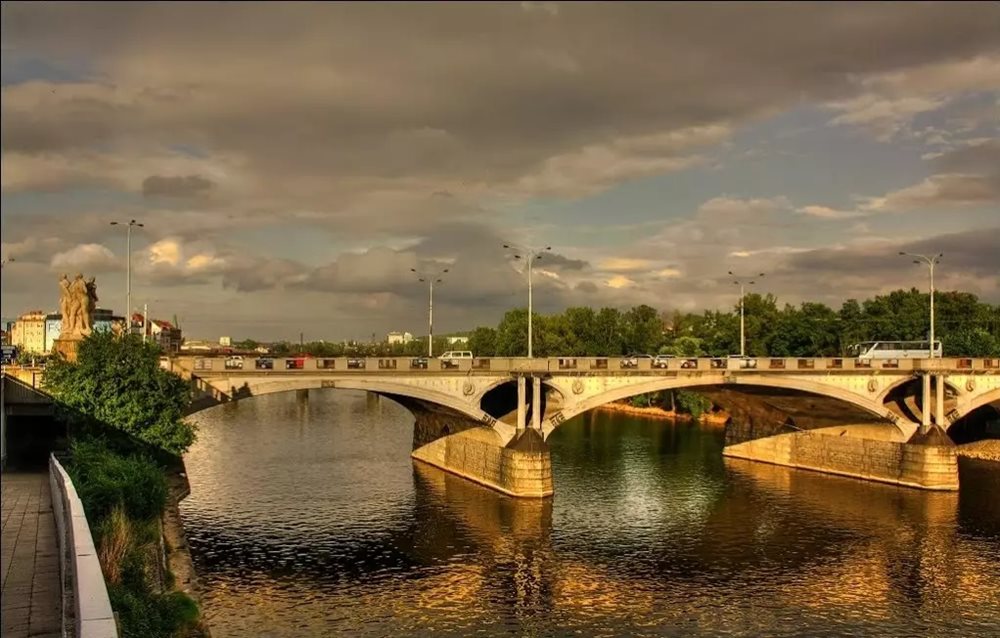
Štefánik Bridge – a bridge whose predecessor was opened by Emperor Franz Joseph I.
Štefánik Bridge was built across the Vltava between 1949 and 1951 and links the area below Letná with the centre of Prague. Originally a suspension chain bridge built between 1865 and 1868, it was named after the Austro-Hungarian ruler at the time. Emperor Franz Joseph I himself even attended the grand opening ceremony. However, over time the bridge proved unable to withstand all the cars and trams, and so it had to be replaced with the reinforced concrete version we see today.
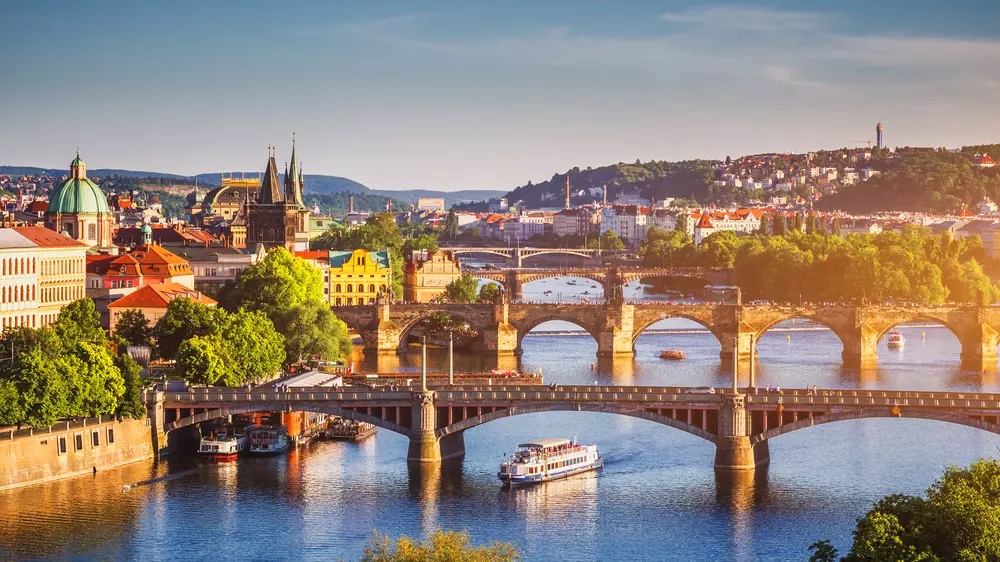
Legion Bridge – a Neo-Baroque Art Nouveau bridge by the National Theatre
Prague’s bridge running from the National Theatre across Střelecký Island to Malá Strana was opened in 1901 in a ceremony attended by Emperor Franz Joseph, after whom it took its first name. On both sides of this Neo-Baroque Art Nouveau bridge there stands a pair of towers, which served as toll gates back when the bridge was first built. There’s a lift that takes you up from the bridge to the lovely Střelecký Island park.
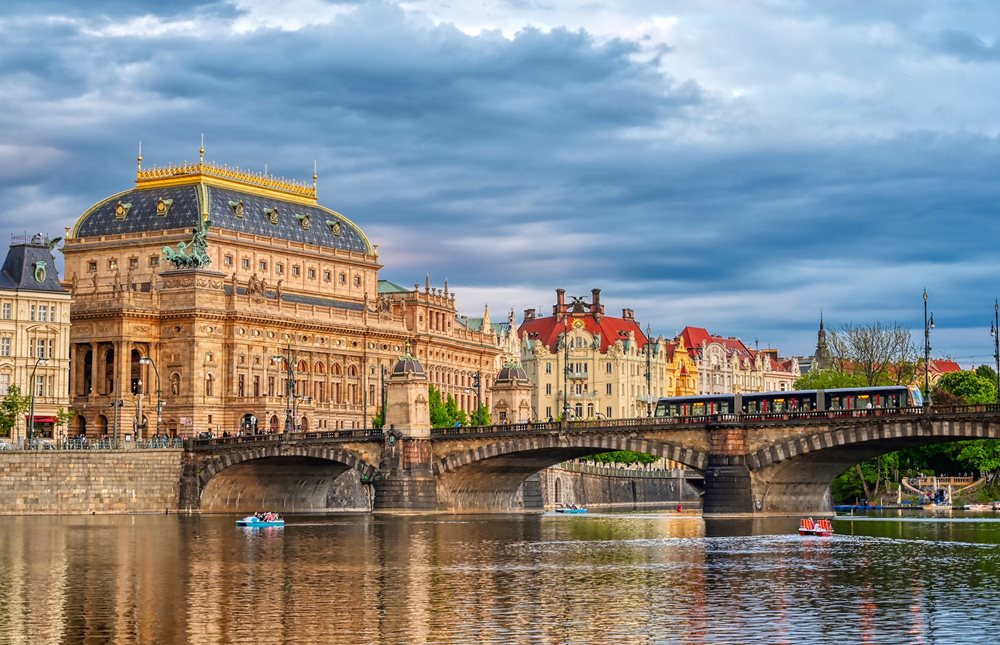
Jirásek Bridge – the one by the Dancing House
And there’s another bridge that stands by one of Prague’s most eye-catching architectural beauties. Jirásek Bridge spans the Vltava from the Dancing House to the Renaissance tower of the Malá Strana waterworks. The were some complications hampering work to build the bridge.
Its construction, which commenced in 1929, was prevented on the Smíchov side by the Baroque pavilion allegendly designed by the renowned architect Kilian Ignaz Dientzenhofer (the Loreto, St. Nicholas Church in Malá Strana…). Initially it was decided to move the pavilion 110 metres upstream; however, it was eventually demolished. After all, there was no insurance company willing to cover the damages if the plan to transfer the pavilion were to fail.
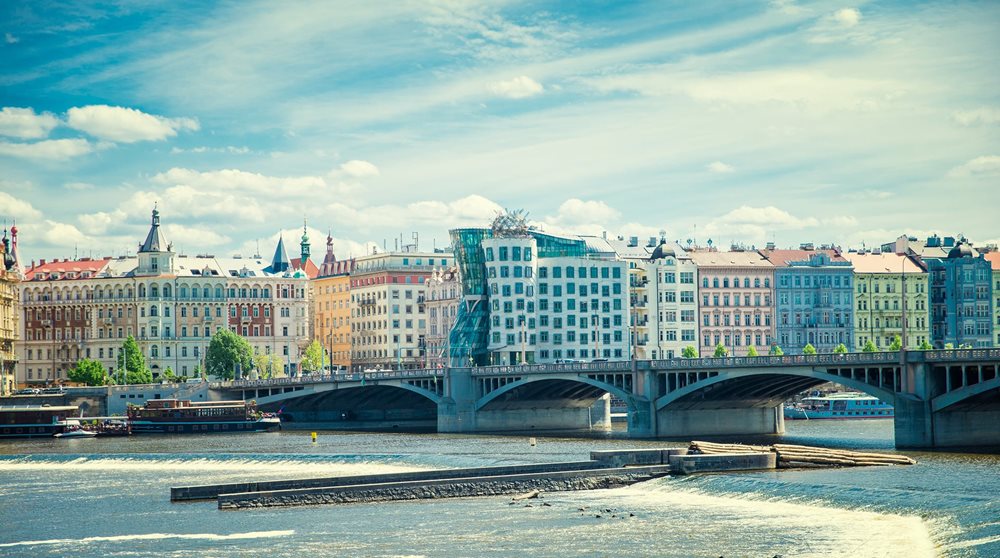
Palacký Bridge – plenty of life under the arches
Prague’s third oldest preserved bridge across the Vltava was built in 1876–1878 to provide access to the booming industrial district of Smíchov (home to the Staropramen Brewery, whose ambassador is Orlando Bloom). It’s a lively spot on both banks of the river right below Palacký Bridge – the Náplavka is packed with cafés and bars, and the popular farmers’ markets are held there every Saturday.
Named after the founder of modern Czech historiography (there is a statue of Palacký on the square by the bridge), it is made of stone and was originally painted in the national colours. It was formerly set with four groups of sculptures by J. V. Myslbek, who created the famous statue of St. Wenceslas on horseback on Prague’s Wenceslas Square. However, the sculptures were badly damaged in an air raid in 1945 and were later moved to the park in Vyšehrad.
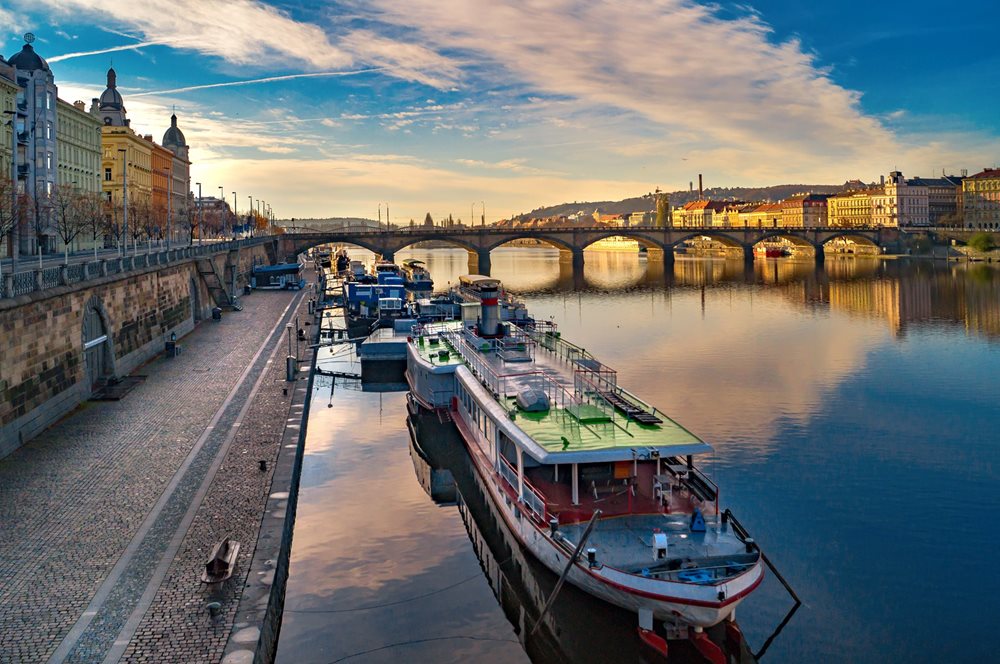
Vyšehrad Railway Bridge – a fine feat of technical engineering on the Vltava
Just after Palacký Bridge you can cross the Vltava using the pedestrian part of the railway bridge built in 1901, whose historical riveted design and stone viaduct make it one of the most important technical heritage sites in Czechia. It links Prague’s Vyšehrad (Vytoň) district with Smíchov.
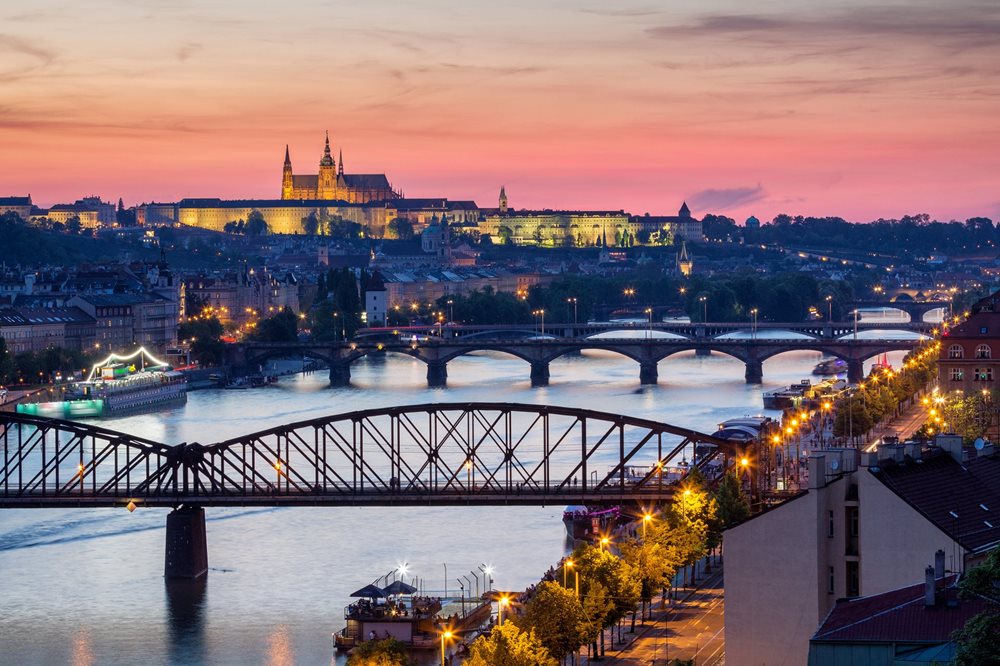
Barrandov Bridge – a brutalist giant and the most congested thoroughfare in Czechia
Built between 1978 and 1988, this bridge is named after Prague’s Barrandov district, which is home to the film studio of the same name, one of biggest and oldest movie studios in Europe. This road bridge across the Vltava River is the largest bridge in Prague and the most congested thoroughfare in Czechia. It was built in the brutalist style; most of its surfaces are made from concrete. There are huge sculptures on the bridgeheads - on the right bank stands Balance, otherwise known as “The Conqueror Worm”, while two concrete bowls adorn the left bank. Those are called the “Hippo Bath” or “Elephant Feeder”.

Braník Railway Bridge – Bridge of the Intelligentsia
Bridge of the Intelligentsia is the name commonly used for Prague’s southernmost railway bridge across the Vltava, accompanied by a pedestrian footbridge. It’s curious nickname comes from the fact that its construction in the 1950s involved a number of people who, after the communist coup, were forced to work as labourers due to the opinions they held, despite being members of the so-called intelligentsia (such as scientists, lawyers, doctors, philosophers…).

Lahovice Bridge and its viewing towers
You can enjoy an amazing view of the confluence of the Vltava – Czechia’s longest river – and the Berounka, not to mention Prague, from the two viewing platforms on the Lahovice road bridge across the Berounka River. They’re open non-stop, and admission is free of charge. There are plenty of places to park nearby, and you can also get there on your bike along the cycle trail.
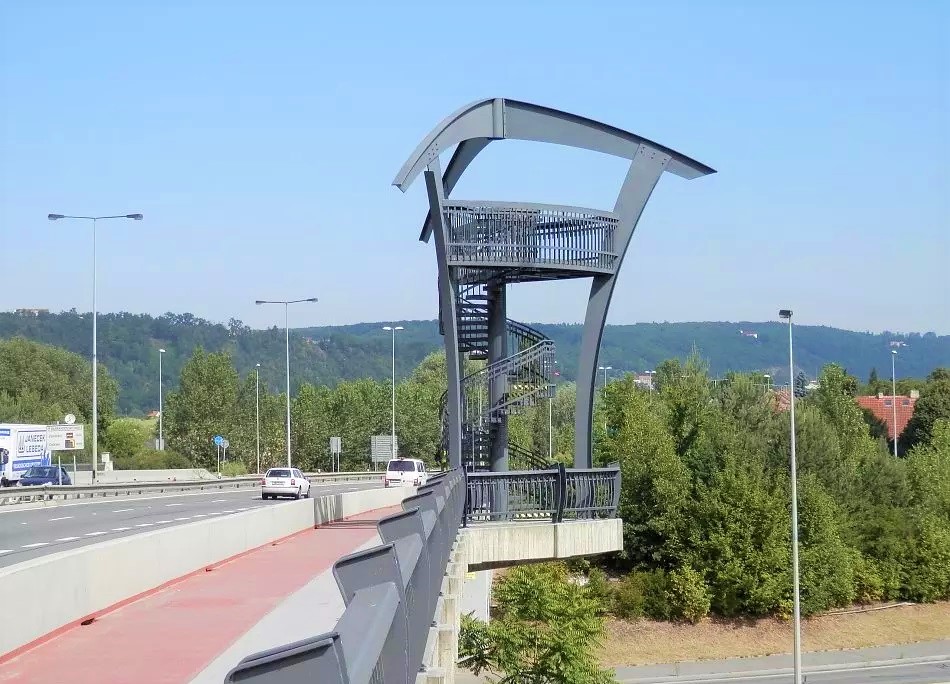
Nusle Bridge – the bridge that can hold up the metro and 66 tanks
One of Czechia’s most famous feats of transport engineering spans the Nusle Valley in Prague. Before it was opened in 1973, the reinforced concrete bridge underwent a rigorous load test. That involved 66 tanks being placed in a line on the unfinished bridge!
The first plans for the structure, which soars more than 40 metres above the valley, assumed that a tram line would be built inside it; in the end, however, the vote went to the metro. So when you’re travelling on line C from I. P. Pavlova to Vyšehrad, keep a sharp eye out! You’ll be riding through a tube inside the “Nuselák”.
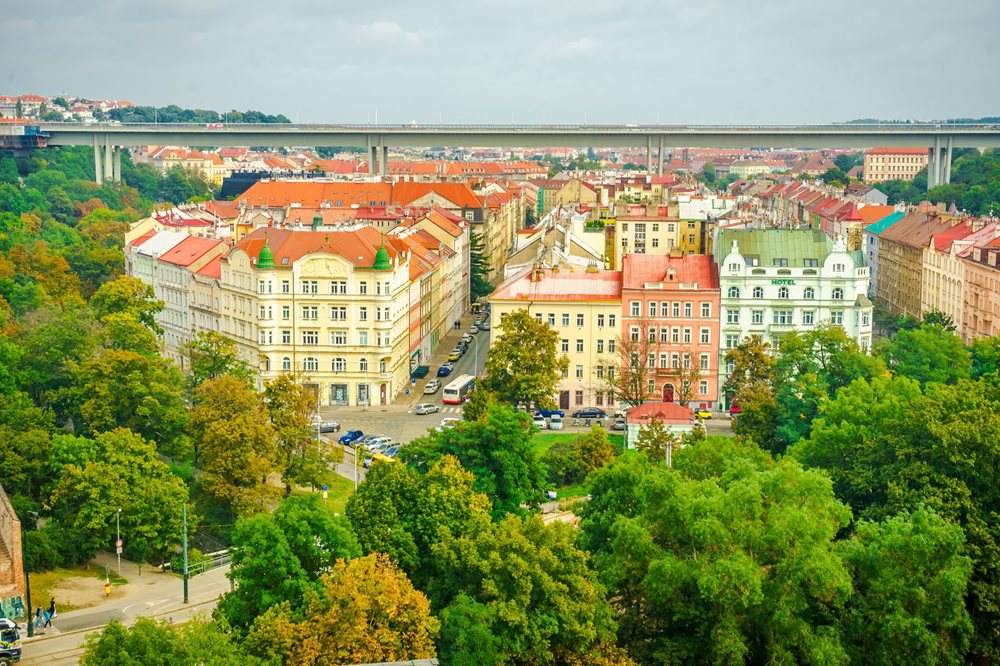
Štvanice footbridge – a new bridge over the Vltava
In the summer of 2023 we’ll see the opening of a brand new footbridge for pedestrians and cyclists, linking Holešovice Market with Prague’s trendy Karlín district, which boasts one of the world’s coolest streets – Křižíkova – packed with cafés and restaurants. The Štvanice footbridge will also connect the biking trails running alongside the Vltava on both banks, as well as offering wheelchair-friendly access to Štvanice Island, from which the footbridge takes its name.

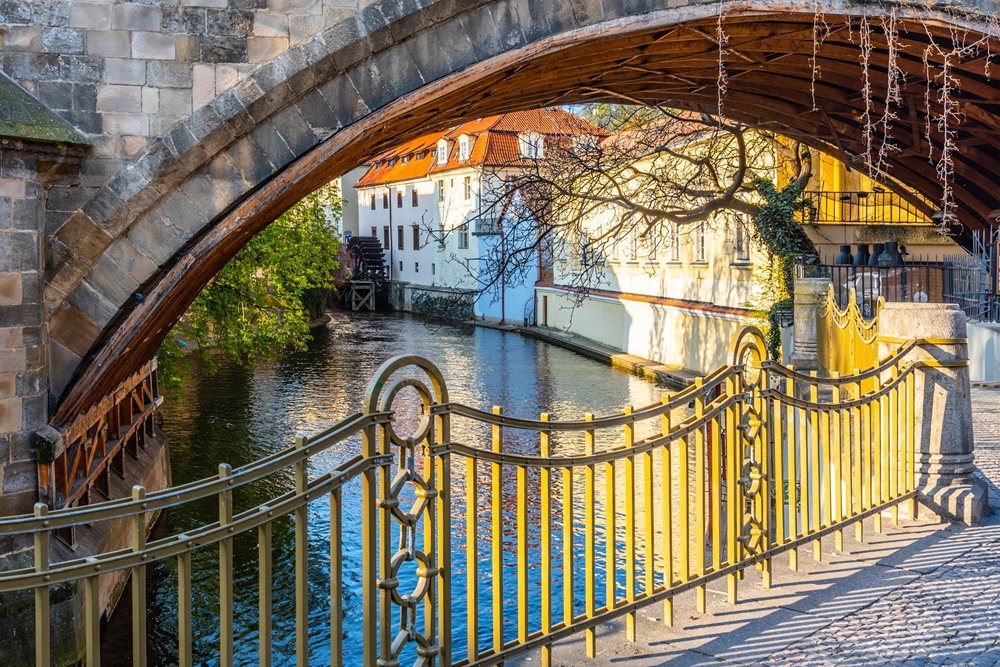
_1.jpg?width=807&height=605&ext=.jpg)











